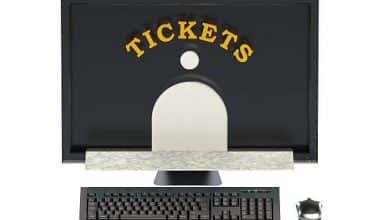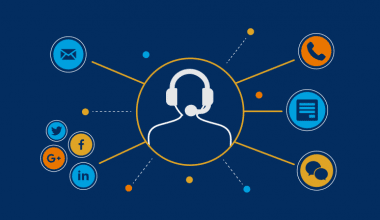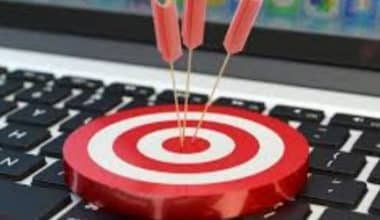Marketers understand that acquiring new prospects is more expensive than retaining existing ones. But how does this show in how we actually decide our consumers’ worth to our brand? Also, how does this affect our marketing strategy as a result?
Never fear, since we’ve compiled all you need to know about this key metric, Customer Lifetime Value. It’s possibly the most significant metric. So, learn more about how to calculate the customer lifetime value for your e-commerce firm in this guide. Once you have a firm grip on CLV and how to apply it in your day-to-day job as a marketer, you will view the customer lifecycle in a completely new light.
What is the Customer Lifetime Value (CLV)?
Customer lifetime value is the entire value of a customer to a firm over the course of their relationship. It’s an important statistic since keeping existing customers costs less than acquiring new ones. Hence improving the value of your existing customers is a fantastic strategy to generate growth.
The statistic takes into account a customer’s revenue value and compares it to the company’s expected customer longevity.
Businesses utilize customer lifetime value to find the most valuable customer categories. So, the longer a customer remains a customer of a company, the higher their lifetime value rises.
This is a measure that customer support and also success teams may have a direct impact on along the customer journey. Customer service representatives and client success managers play essential roles in resolving issues and making recommendations that promote customer loyalty and decrease churn.
What Is the Importance of Customer Lifetime Value?
Here are some of the reasons why knowing your CLV is critical:
#1. It has a direct impact on your revenue.
The CLV determines the specific consumers who generate the greatest money for your company. This allows you to supply these existing clients with products/services they enjoy. Hence you make them happier and increase their spending at your company.
According to Businessyield Research, 55 percent of growing organizations believe that investing in customer service programs is “extremely vital.”
Only 29 percent of organizations with stagnant or declining revenue indicated this investment was “extremely significant”. Companies that aggressively pursue customer success see improved revenue as a result of increased customer pleasure.
#2. It improves costumer retention and loyalty.
When a firm optimizes its CLV and regularly provides value — whether it’s through exceptional customer service, products, or a reward program — it tends to boost customer loyalty and retention.
A decreased churn rate, as well as a boost in referrals, favorable reviews, and revenue, are all benefits of more loyal customers.
#3. It assists you in identifying your ideal clientele.
When you know a customer’s lifetime value, you also know how much money they spend with your company over time – whether it’s $50, $500, or $5000. Armed with this knowledge, you can develop a customer acquisition plan that focuses on customers who will spend the most money at your establishment.
#4. It lowers the cost of acquiring new customers.
Acquiring a new customer can be an expensive endeavor. In fact, according to a Harvard Business Review article, acquiring a new customer might cost anywhere from five to twenty-five times more than retaining an existing one.
Furthermore, another study conducted by Bain & Company discovered that a 5% improvement in retention rate might result in a profit increase ranging from 25% to 95%.
These statistics demonstrate the importance of identifying and nurturing the most important clients that connect with your organization. You’ll have larger profit margins, higher client lifetime values, and lower customer acquisition expenses as a result.
How to Increase Customer Lifetime Value CLV
Customer lifetime value is all about establishing a long-term beneficial relationship with your consumers. As a result, nurturing those client relationships is the obvious method to increase your CLV stats. Here are a few ideas to get you started.
#1. Spend money on the customer experience.
Customer experience encompasses every interaction a customer has with a company. So, it includes store visits, contact center inquiries, purchases, product use, and even their exposure to advertising and social media. Improving the experience is a company-wide effort that is frequently addressed with a customer experience management program. So, this is a process of watching, listening, and making changes that result in a long-term improvement in how customers feel and their proclivity to stay loyal.
#2. Begin a loyalty program.
A loyalty program encourages repeat business by providing discounts or incentives in exchange. It could take the shape of a loyalty card or app. Also, it could be a points system that users accumulate when they make a purchase. Although it is not a magic bullet for client retention, a well-planned and executed loyalty program can produce excellent outcomes. We’ve got plenty of pointers to help you establish your customer loyalty program just right.
#3. Recognize and reward your most valuable clients.
You’ll already have some ideas about which customers are likely to have the highest CLV once your customer experience management program is up and running. Also, you may strengthen your ties with these individuals or groups by utilizing targeted marketing and special offers that reward their loyalty. So, this could include free expedited shipping, top-tier reward club privileges, or access to exclusive or pre-release products and also services.
#4. Close the loop with dissatisfied customers.
Closed-loop feedback is an effective method for reducing unwanted churn and converting disgruntled consumers into newly committed ones. In this model, businesses reach out to detractors or complainants on their own initiative and also intervene before problems worsen, leading to a breakdown in the customer relationship. In many circumstances, the business’s targeted effort and active listening strengthen the relationship even more than it was before. It’s a useful addition to your customer experience management program.
Now, in the following section, we will learn how to calculate customer lifetime value CLV.
How to Calculate Customer Lifetime Value Metrics
#1. Average Purchase Price
Divide your company’s total revenue in a given period (typically a year) by the number of purchases made during that same period to arrive at this figure.
#2. Average Purchase Frequency Rate
Divide the number of purchases by the number of unique consumers who made purchases during that time period to arrive at this figure.
#3. Customer Appreciation
Multiply the average purchase amount by the average buy frequency rate to get this figure.
#4. Average Customer Lifespan
Calculate this figure by averaging the number of years a customer has been a customer of your company.
#5. Customer Loyalty Value (CLV)
To calculate the customer lifetime value, multiply the average customer lifespan by the customer value. The multiplication will give you the revenue that an average customer can reasonably expect to generate for your company over the course of their relationship with you.

Example of Customer Lifetime Value
For calculating CLTV, we can use data from a Kissmetrics report and also use Starbucks as an example. Its study assesses five clients’ weekly purchase behaviors and then averages their overall amounts. We can use this information to calculate the average lifetime value of a Starbucks customer by following the processes outlined above.
#1. Determine the average buying price.
First, we must determine the average purchase value. The average Starbucks customer spends roughly $5.90 every visit, according to Kissmetrics. This can be calculated by average the amount of money spent by a customer at each visit during the week. For example, if I went to Starbucks three times and bought a total of $9, my average purchase value would be $3.
We may repeat the process for the other five customers once we’ve calculated the average purchase value for one. After that, combine each average together and divide the total by the number of clients polled (five) to obtain the average purchase value.
#2. Determine the average rate of purchasing frequency.
The average buy frequency rate is the next step in computing CLTV. In the case of Starbucks, we need to know how many times a week the average customer visits one of its shops. The average number of visits seen across the five clients in the study was 4.2. So, this gives us a buy frequency rate of 4.2.
#3. Determine the average customer’s worth.
We can calculate customer value now that we know how much the average customer spends and also how many times they visit in a week. So, to accomplish this, we must examine each of the five clients separately and also multiply their average buy value by their average purchase frequency rate. This tells us how much revenue the consumer is worth to Starbucks in a week’s time.
After repeating this computation for each of the five customers, we average their values to arrive at the average customer’s value of $24.30.
#4. Determine the average customer’s lifetime value.
While Kissmetrics does not specify how it determined Starbucks’ average customer lifetime duration, it does indicate that it is 20 years. To calculate Starbucks’ average customer longevity, we must consider the number of years each customer visited Starbucks. Then we could use the average of the variables to get 20 years. If you don’t have 20 years to wait and test that, divide 1 by your turnover rate percentage to estimate client lifespan.
#5. Determine the lifetime value of your customer.
We can use the average customer value and average customer lifespan to calculate CLV once we’ve obtained the average customer value and average customer longevity. In this instance, we must first divide the average customer value by 52. We need to multiply their customer value by 52 to get an annual average because we measured them based on their weekly habits. Then, multiply this figure by the customer lifetime value (20) to get the CLV.
That value is $25,272 for Starbucks consumers (52 x 24.30 x 20= $25,272).
How can CLV help with customer retention?
Knowing a customer’s CLV can help with customer retention by providing a clearer picture of the potential revenue a customer may bring over their lifetime, which can inform decisions on how much to invest in retaining that customer. For example, a customer with a high CLV may warrant more resources towards retention efforts.
How do you calculate the discount rate in CLV?
The discount rate in CLV represents the time value of money, taking into account the opportunity cost of the funds used to purchase the customer. It’s typically calculated using the weighted average cost of capital (WACC), which accounts for the cost of debt and equity financing.
How do you factor in customer churn into CLV calculations?
Customer churn, or the rate at which customers stop doing business with a company, can be factored into CLV calculations by estimating the expected future revenue that will not be received due to churn. This can be done by multiplying the churn rate by the expected revenue from each customer.
What are the key components of CLV?
The key components of CLV include the customer’s expected revenue, the expected cost of retaining the customer, and the discount rate used to account for the time value of money. These components are used to estimate the total revenue a customer will bring over their lifetime with a company.
How does CLV differ from customer acquisition cost (CAC)?
While CLV is focused on the total value a customer brings over their lifetime, CAC is focused on the cost of acquiring a new customer. CLV takes into account future revenue and costs, while CAC is typically limited to the cost of acquiring a customer in the present.
Conclusion
Though there are numerous ways to deconstruct and also use the CLV, considering it solely as a tool for obtaining as many consumers as possible as cheaply as possible is a formula for disaster. Furthermore, thoroughly assessing your CLV can assist you in prioritizing segmentation, retention, and monetization to improve future customer profitability. However, as stated by Harvard Business Review, CLV should be used to perceive consumers as value-creating partners rather than value-extraction targets.
Remember that CLV is only one piece of the jigsaw, but when supplemented with more advanced analytics. It can be a powerful tool for understanding your customers and their impact on your organization.
How do you calculate lifetime value of a customer?
The simplest formula for measuring customer lifetime value is the average order total multiplied by the average number of purchases in a year multiplied by average retention time in years. This provides the average lifetime value of a customer based on existing data
What is customer lifetime value with example?
What is customer lifetime value with an example? Customer lifetime value represents the total revenue a customer will generate for a business throughout the relationship. For example, let’s say a typical restaurant customer visits once per month and spends $17 per visit over an average lifetime of 10 years.
What is the role of customer lifetime value in relationship marketing?
CLV will help you find balance in terms of short-term and long-term marketing goals and demonstrate a better understanding of financial return on your investments. CLV encourages better decision making by teaching marketers to spend less time acquiring customers with lower value
Does LTV include CAC?
LTV: CAC ratio is one of the most critical indicators of future success and also a key calculation used by investors to determine valuation. Simply, the LTV: CAC ratio is the relationship between a customer’s lifetime value or LTV, and the cost to acquire that customer, known as CAC or customer acquisition cost






